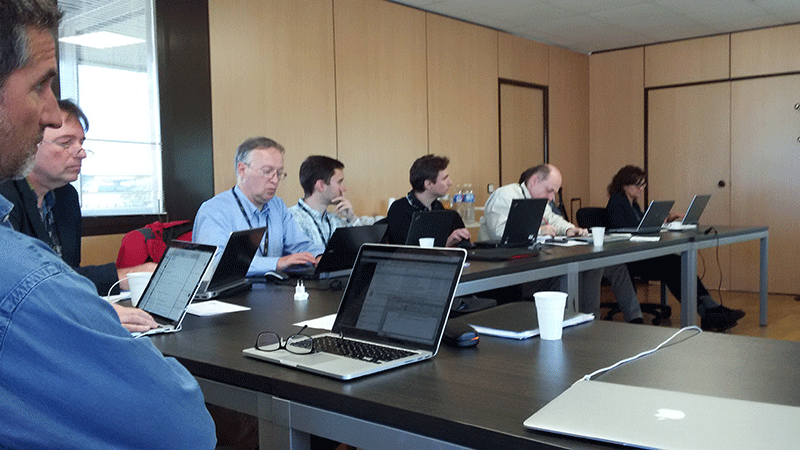GMV hosts the meeting of the Sentinel POD Quality Working Group

Precise Orbit Determination (POD) has traditionally been an area of expertise reserved for research centers and space agencies. The reason for this is the detailed and complex modelling needed to achieve the required accuracies and also the state-of-the-art tracking techniques involved. Very few firms have yet developed the required expertise in this field, so GMV now boasts a clear industrial leadership in these activities.
GMV, in particular, has developed and operated from its Tres Cantos headquarters the Precise Orbit Determination (POD) service of the Sentinel-1, -2 and -3 missions of the Copernicus program of the European Commission (EC) and the European Space Agency (ESA). The role of the POD service is to generate these missions’ precise operational orbits. These orbits are then used afterwards to process the satellites’ scientific data, for the purposes, for example, of reconstructing radar images or processing altimetry readings.
On 31 May and 1 June 2016 GMV hosted the meeting of experts of the Sentinel POD Quality Working Group, a meeting held each year in a different European venue. It has previously been held in ESOC (Germany) and in ESRIN (Italy), in October 2014 and June 2015, respectively.
The objectives of a quality working group within ESA missions are the following:
- Obtain information on the latest scientific advances in the particular working area concerned, in this case precise orbit determination
- Pinpoint data-processing improvements that might be brought in
- Present product quality improvement recommendations to ESA
In the latest working group, held on GMV’s Tres Cantos site, various speakers from ESA (ESRIN, ESOC, ESTEC), EUMETSAT, DLR, CNES and from the universities of Bern (AIUB), Munich (TUM) and Delft (TU Delft) presented their findings on the quality of the products generated by the Copernicus POD Service Centre, vouching for their high quality. Witness the fact that the GMV-calculated orbits of these three missions (Sentinel-1, -2 and -3) typically have differences of less than 5 cm when compared with any of the aforementioned institutions. In applications like altimetry, where radial direction is important for determining, for example, rises in sea levels, the GMV-calculated solution is clocking up a 1-cm accuracy rate.
On many occasions ESA has congratulated GMV for its excellent work and the high quality of the products generated.